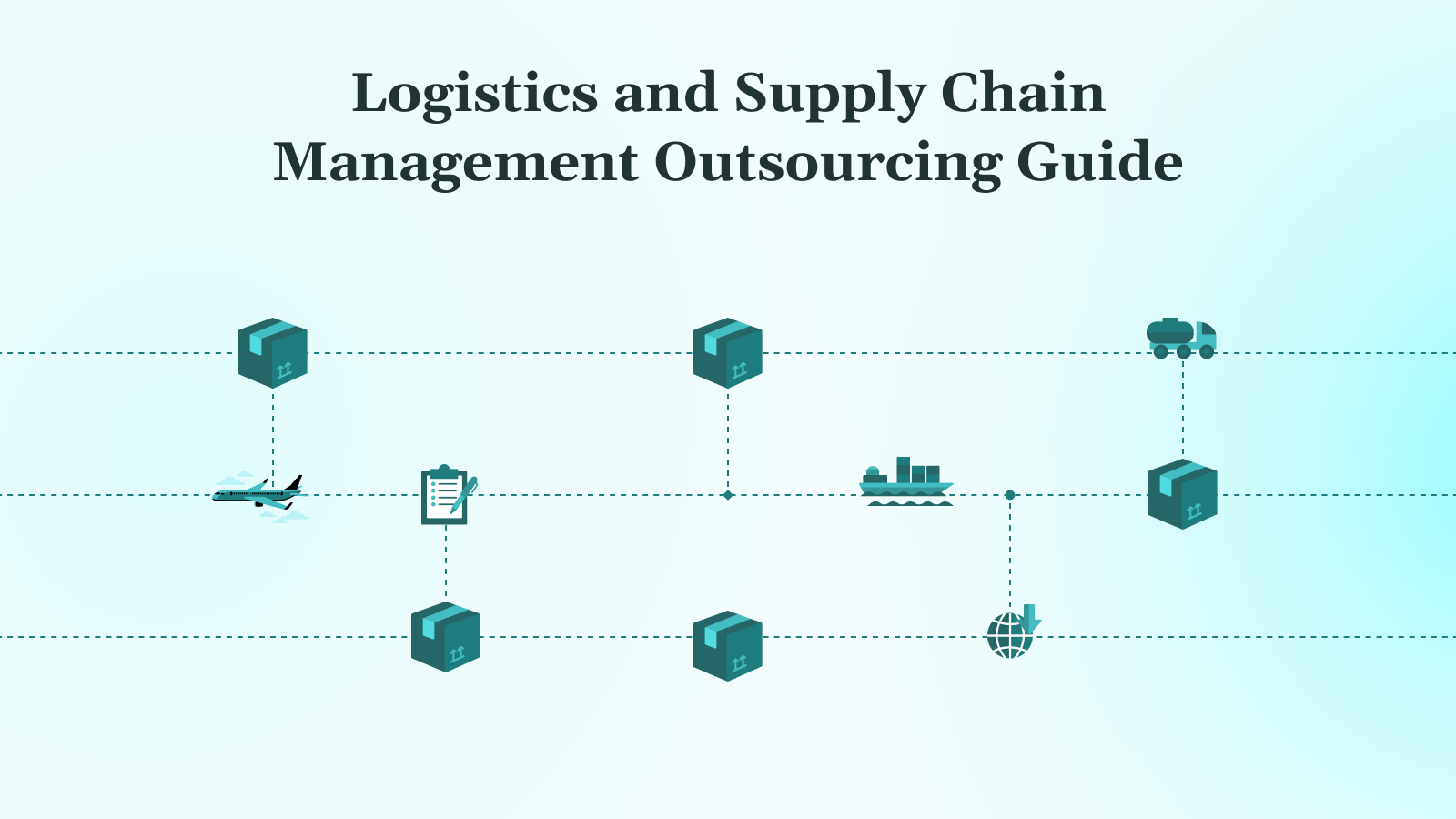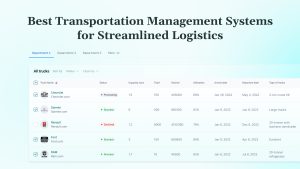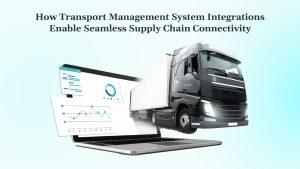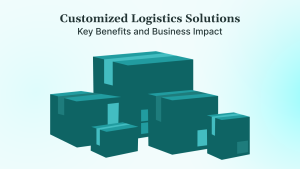Global supply chain disruptions in 2024 led to financial losses averaging ~8% of annual revenue for companies in 2025. Rising costs, complex logistics, and frequent disruptions make managing supply chains in-house difficult.
Companies aiming to meet fast delivery demands and optimize resources often find their internal teams stretched thin. Outsourcing logistics to specialized providers offers a practical way to reduce operational burden, accelerate fulfillment, and improve flexibility.
This guide will help you confidently assess, choose, and manage logistics outsourcing partners to overcome these issues and increase long-term business success.
Key Takeaways
- Outsourcing logistics lets you focus on your core business while experts handle shipping, storage, and deliveries.
- Cutting costs is easier when you do not need to invest in your own warehouses or transportation fleet.
- Fast shipping is now a powerful driver of customer satisfaction, with the usage of same-day delivery growing across both online-only and traditional retailers in recent years.
- You can choose the logistics model that fits your needs, whether it is basic shipping support or full supply chain management.
- Success comes down to having clear goals, choosing the right partner, and keeping communication strong throughout the process.
What Is Logistics and Supply Chain Management Outsourcing?
Logistics and supply chain management outsourcing means hiring specialized third-party providers to handle key supply chain functions such as transportation and warehousing, procurement, and distribution. This approach enables businesses to reduce costs, improve efficiency, and focus on their core activities.
Success in outsourcing depends on choosing the right partner, ensuring seamless integration, maintaining clear communication, and continuously monitoring performance.
Benefits of Logistics Outsourcing
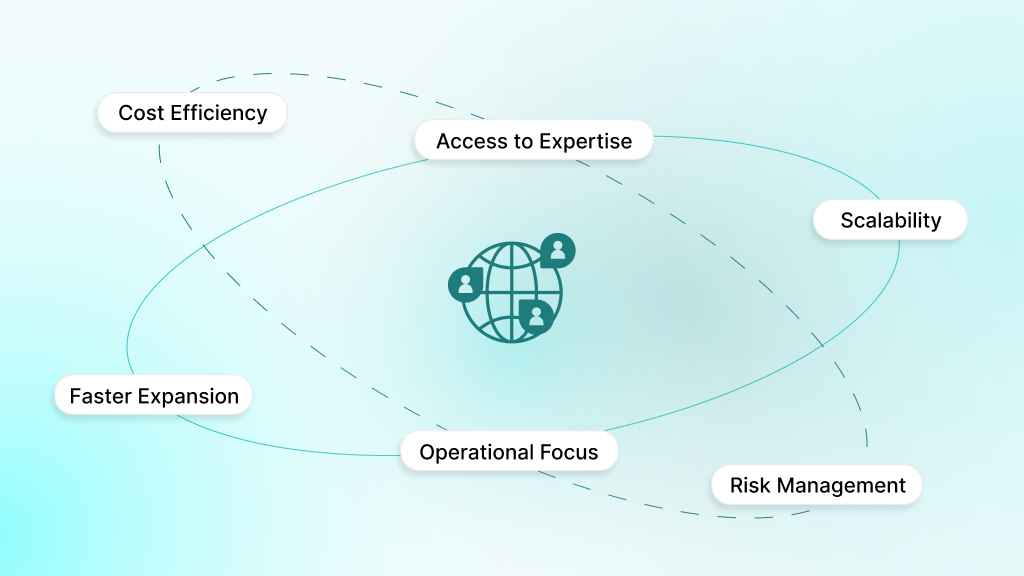
Outsourcing logistics offers several advantages that drive efficiency and growth for businesses of all sizes.
- Cost Efficiency: Businesses reduce capital expenditure on warehouses, fleets, and logistics systems. Services are typically billed on a scalable, pay-as-you-use model.
- Access to Expertise and Technology: Providers bring industry know-how and advanced tools, including Warehouse Management System, real-time tracking, and automation solutions.
- Scalability and Speed: Outsourcing partners quickly adapt to demand fluctuations and enable faster service through established logistics networks. Over 50% of U.S. retailers now expect same-day service from their logistics partners, making speed a critical factor in provider selection.
- Faster Market Expansion: With ready infrastructure, 3PL (Third Party Logistics) and 4PL(Fourth-Party Logistics) providers allow quicker entry into new regions without the need for major setup.
- Operational Focus: Delegating logistics enables internal teams to focus on strategy, innovation, and delivering an exceptional customer experience.
- Risk and Compliance Management: Experienced partners improve resilience, ensure regulatory compliance, and handle disruption planning.
Outsourcing logistics is a strategic decision that supports cost control, operational agility, and sustainable growth.
Read more about Logistics Management Software Solutions.
Different Types of Logistics Outsourcing
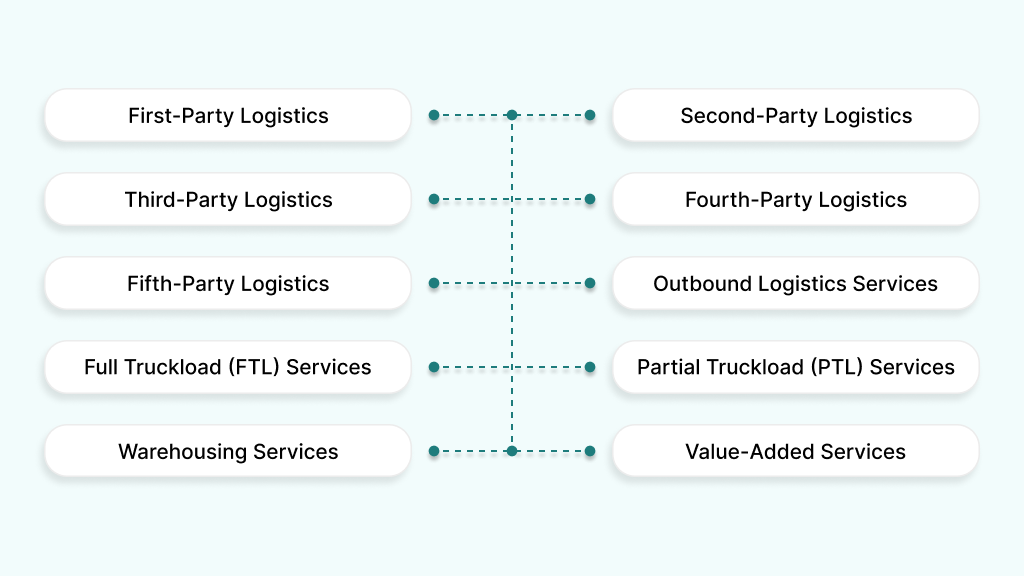
Businesses can select from several types of logistics outsourcing, based on specific needs and supply chain complexity.
- First-Party Logistics (1PL): The company manages transportation and logistics internally, using its own resources.
- Second-Party Logistics (2PL): Outsourcing is limited to transportation services, such as hiring carriers or shipping companies to move goods.
- Third-Party Logistics (3PL): A third-party provider manages multiple functions, including warehousing, inventory, order fulfillment, transportation, and sometimes reverse logistics. Most companies prefer this option for its blend of flexibility and expertise.
- Fourth-Party Logistics (4PL): The provider oversees the entire supply chain, often coordinating multiple 3PLs. A single point of contact manages, integrates, and optimizes all logistics activities across the business.
- Fifth-Party Logistics (5PL): 5PL introduces advanced technology, such as automation and analytics, to design, implement, and optimize complex supply chain networks.
- Outbound Logistics Services: These focus on moving finished goods from warehouses or production floors to end consumers, handling packing, inventory management, shipping, and delivery.
- Full Truckload (FTL) Services: The provider dedicates an entire truck to a client’s shipment, ideal for large or consolidated loads that require direct delivery.
- Partial Truckload (PTL) Services: Shipments from multiple clients share truck space, lowering costs for smaller loads without filling a full truck.
- Warehousing Services: External providers manage storage, distribution, and inventory, offering secure and scalable warehouse facilities that provide a reliable solution for businesses.
- Value-Added Services: These include specialized packaging, returns management, kitting, and other custom logistics functions to support business requirements.
Selecting the right type depends on factors such as business volume, service complexity, technology needs, and the desired level of control over the supply chain.
Not sure which logistics model fits your business? DEVtrust can recommend the right approach, whether that is 3PL, 4PL, or a hybrid model. Get expert advice today.
Your Roadmap for Logistics Outsourcing Success
Outsourcing logistics can boost efficiency and reduce costs, but success requires more than choosing a provider. A structured approach aligned with your business goals and systems ensures lasting value. This roadmap guides you through every key step of the outsourcing journey.
Define Your Needs and Goals
Before outsourcing, clearly outline your objectives and expectations:
- Identify which logistics functions to outsource: Decide if you need help with inventory management, order fulfillment, transportation, warehousing, or end-to-end supply chain operations.
- Set measurable goals: Define success with specific targets, such as reduced costs, faster delivery times, improved order accuracy, or greater service flexibility.
- Align outsourcing with business strategy: Ensure logistics decisions support your overall business objectives and future growth plans.
Clarifying your needs at this stage creates a strong foundation for all partnership decisions that follow.
Research and Select a Provider
Thorough research ensures only suitable logistics partners are shortlisted for consideration.
Steps to Evaluate Providers
- Assess company reputation: Examine market standing, existing client testimonials, and reviews.
- Evaluate reliability: Check on-time delivery rates, responsiveness, and ability to meet SLAs (service-level agreements).
- Check geographical coverage: Ensure providers have a network that matches your distribution needs.
- Review industry experience: Prefer providers with a proven track record in your sector.
Provider Evaluation Scorecard
| Criteria | Questions to Ask |
| Reputation | Do they have satisfied clients in your industry? |
| Reliability | Do KPIs (on-time delivery, accuracy) meet expectations? |
| Geographic Coverage | Can they reach your target regions and growth markets? |
| Industry Experience | Have they served businesses similar to yours? |
| Compliance | Are they compliant with relevant laws and standards? |
Shortlisting 2–3 qualified candidates at this stage prepares you for deeper technical and commercial evaluations in the next steps.
Assess Technological Capabilities
Modern logistics relies on sophisticated technology for efficiency, accuracy, and scalability.
Technology Considerations
- Warehouse Management Systems (WMS): Systems that streamline inventory handling, order picking, and stock tracking.
- Real-time tracking: Capabilities to monitor shipments, deliveries, and exceptions.
- Integration with your systems: APIs or software tools to enable data exchange.
- Automation and analytics: Robotics, IoT devices, and reporting dashboards.
How Technology Drives Results
- Reduces manual errors
- Improves visibility across the supply chain
- Enables fast problem resolution
With technological capabilities understood, clarify how the partnership will fit your budget.
Understand the Cost Structure
Cost transparency is vital to avoid unpleasant surprises and design a partnership that aligns with your financial targets.
Cost Structure Checklist
- Fixed vs. variable pricing: Are you billed per shipment, per pallet, or monthly?
- Hidden charges: Are there surcharges, minimums, or penalties for non-standard services?
- Alignment with forecasts: Does the provider support scalable pricing based on your business growth?
- Clarity on invoicing: Are all fees itemized and easy to understand?
Common Logistics Cost Elements
| Cost Element | Typical Example |
| Transportation | Freight charges by weight/distance |
| Warehousing | Per square foot/month or per pallet/month |
| Handling | Per order, container, or unit |
| Value-added services | Custom labeling, kitting, assembly |
| Technology | WMS access, integration, or implementation |
After cost matters are clarified, craft a contract that protects your interests.
Establish a Contract Framework
A well-written contract is crucial to setting expectations, measuring results, and minimizing disputes.
Key Contract Elements
- Service Levels: Define KPIs such as delivery windows, accuracy rates, and response times.
- Penalties for non-performance: Specify deductions or remedies if KPIs are not met.
- Termination provisions: Offer clear guidelines for ending the relationship and transitioning away.
- Change management: Outline procedures to implement new processes or adapt services.
Example Service Level KPIs
| KPI Name | Target |
| Order accuracy rate | 99.9% |
| On-time delivery rate | ≥ 98% |
| Inventory accuracy | ≥ 99% |
| Response to incidents | Under 4 hours |
After contracts are in place, establish channels for seamless communication.
Set Up Communication Channels
Clear and consistent communication is vital for effective collaboration and problem-solving.
Best Practices
- Designate points of contact: Assign project managers from both sides for coordination.
- Regular status updates: Agree on weekly or monthly check-ins to discuss performance, issues, and next steps.
- Crisis handling: Define escalation paths and timelines for urgent matters.
- Documentation: Use project management tools to centralize communication, files, and approvals.
Tools for Effective Communication
- Project management software (e.g., JIRA, Asana)
- Video conferencing
- Shared document repositories
- Real-time chat for urgent tasks
Effective communication sets the stage for a smooth operational transition to the outsourcing provider.
Develop a Transition Plan
Transitioning logistics to an external provider requires detailed planning to ensure smooth operations. A clear plan minimizes disruptions and aligns teams for a successful handover.
Transition Plan Steps
- Testing phases: Pilot runs with real data, adjusting for process gaps.
- Training sessions: Educate your team on new workflows and systems.
- Initial monitoring: Implement heightened monitoring for a specified period post-launch.
Transition Timeline Example
| Phase | Milestone | Duration |
| Preparation | Audit & documentation | 2 weeks |
| Pilot | Test with sample orders | 1-2 weeks |
| Full launch | Go live with all orders | 1 week |
| Monitoring | Daily review sessions | 2 weeks |
| Stabilization | Normal reporting cadence | Ongoing |
Organizational preparation comes next to maximize employee engagement.
Prepare Your Organization
Preparing your organization is key to successful logistics outsourcing. It ensures employees are ready, supported, and aligned with new processes and partners.
Key Internal Readiness Actions
- Employee training: Ensure staff are comfortable with new processes and tools.
- Change management: Explain the reasons for outsourcing and its expected benefits.
- Address resistance: Listen to concerns, provide support, and highlight opportunities for professional growth.
Checklist: Internal Readiness
- Training completed for relevant teams
- Employees know new communication paths
- Feedback mechanisms are in place
Ongoing performance monitoring will ensure objectives are consistently met.
Monitor Performance
Continuous performance monitoring ensures the outsourcing partnership meets its goals. Regular reviews and data tracking help identify issues and drive improvements.
Steps for Performance Monitoring
- Establish KPIs: Refer to contract-defined metrics and update as necessary.
- Conduct regular reviews: Schedule monthly or quarterly business reviews with the provider.
- Use dashboards: Visualize data for easy tracking and faster decision making.
- Issue logs: Maintain a comprehensive record of issues, resolutions, and process improvements.
Example KPI Dashboard
| Metric | Target | Actual (Month) | Action Required |
| Order accuracy | 99.9% | 99.7% | Audit process |
| On-time shipments | 98% | 98.5% | None |
| Damaged goods rate | 0.1% | 0.2% | Review packing |
View Outsourcing as an Ongoing Process
Outsourcing logistics is a continuous journey that requires adaptation and learning. Maintaining strong partnerships and embracing change ensures long-term success and improvement.
Approach to Long-Term Success
- Expect ongoing change: Adjust targets as business needs evolve.
- Continuous learning: Keep up with industry changes and incorporate new technologies.
- Provider partnership: Encourage open feedback to fuel innovation and process refinement.
Summary Checklist: Successful Logistics and Supply Chain Management Outsourcing
| Step | Key Actions | Outcome |
| Define Needs and Goals | List functions, set outcomes | Clear direction |
| Research and Select Provider | Analyze, score, shortlist | Best fit partner |
| Assess Technological Capabilities | Evaluate tools, integration | Smooth operations |
| Understand Cost Structure | Confirm transparent billing | Financial confidence |
| Establish a Contract Framework | Specify KPIs, penalties | Service accountability |
| Set Up Communication Channels | Regular updates, shared documentation | Coordination |
| Develop a Transition Plan | Run pilots, train employees | Smooth implementation |
| Prepare Your Organization | Educate the team, minimize resistance | Team alignment |
| Monitor Performance | Track KPIs, review regularly | Continuous improvement |
| View as Ongoing Process | Foster long-term partnership | Resilient supply chain |
Case Study: Moveit4U, Smarter Logistics Through Outsourcing
DEVtrust resolved critical development setbacks for Moveit4U, an Australian-based transport management system, by addressing incomplete code, automating job creation, and integrating carriers in real-time.
DEVtrust stepped in to:
- Fix and optimize the inherited codebase.
- Automate job creation from XML emails.
- Integrate with the “BOND” carrier system for real-time delivery updates.
- Implement role-based workflows and advanced job management tools.
Results:
- 50% reduction in manual admin efforts.
- 40% improvement in user satisfaction.
- 25% increase in on-time payments (via Stripe).
- Zero downtime during user surges and stronger data security.
This example highlights how effective logistics outsourcing delivers speed, flexibility, and measurable impact for transport platforms.
Conclusion
Effective logistics outsourcing enables companies to operate more efficiently and respond faster to evolving market demands. With the right partner and disciplined execution, businesses gain measurable improvements in performance, cost savings, and customer satisfaction, as seen in the success of Moveit4U.
For enterprises seeking dependable growth and lasting operational excellence, DEVtrust provides tailored, future-ready logistics solutions that deliver real results.
Partner with DEVtrust to strengthen your supply chain and gain a lasting strategic advantage.
Logistics and Supply Chain Management Outsourcing Guide
Optimize logistics and supply chain management outsourcing by setting goals, choosing the right provider, and establishing a comprehensive contract. Act now!
Contact Us